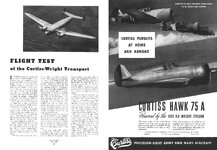Nodeo-Franvier
Airman 1st Class
- 124
- Jul 13, 2020
P-36 was the most successful aircraft in the battle of France,Outperforming even more modern Dewoitine d.520.
Why was this seemingly medicore plane performed so well in 1940?
Why was this seemingly medicore plane performed so well in 1940?

